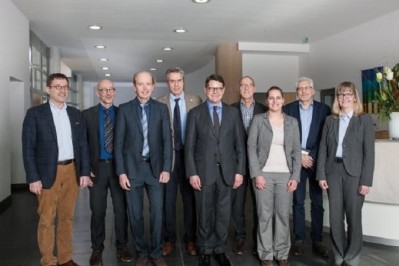AOAC document ensures LC-MS/MS allergen methods are fit for purpose

It is for detection and quantitation of egg, milk, peanut and hazelnut allergens in finished food products and ingredients.
AOAC SMPRs describe minimum recommended performance characteristics used during the evaluation of a method. Evaluation may be an on-site verification, a single-laboratory validation or a multi-site collaborative study.
Framework for method development
The document sets the framework for method development by outlining what the minimum requirements for any LC-MS/MS method for food allergens need to be, so any newly developed methods can be evaluated against criteria to see if they are fit for purpose.
AOAC, as a SDO (standards development organisation), is the first to have a community accepted document for LC-MS/MS. It was voted on at the mid-year AOAC meeting in Washington in March.
The document was developed by the Working Group for Allergens and approved by the Stakeholder Panel on Strategic Food Analytical Methods (SPSFAM).
The working group included Bert Popping, Mérieux NutriSciences; Carmen Diaz-Amigo; Vincent Paez (group chair), SCIEX; Katherine Fiedler, FDA; Erik J. M. Konings, Nestle Research Center; Lisa Monteroso, 3M Food Safety; Jeff Turner, Sigma-Aldrich and Jinchuan Yang, Waters Corp.
Method fit for purpose
Popping said there had been other publications (including as part of the MoiniQA project (Phil Johnson et al), but never a community accepted SMPR.
He added it was the groundwork for any LC-MS/MS method applying to become a standard.
“LC-MS/MS in the field of allergens is relatively new, we have these requirements for PCR and ELISA. Before, people could come up with a method with a limit of detection that was too high. This makes sure any method considered as a standard is fit for purpose.
"I think we will see the first methods deal with egg and milk as current ELISA kits in the EU are not up to the task. It is a problem in the allergen field, industry and testing labs in the absence of anything better, they had ELISA.
“It takes time to get a standard published, it could be six years’ worth of work and technology moves on. AOAC took a different route as methods are evolving quickly so the First Action method level was created.”
Expert review panels (ERPs) adopt methods as Official First Action methods and make a recommendation to the Official Methods Board.
Method quantitation limit (MQL) is the minimum concentration or mass of analyte in a given matrix that can be reported as a quantitative result.
Method detection limit (MDL) is the minimum concentration of a substance than can be measured and reported with 99% confidence that the analyte concentration is greater than zero.
It lists the priority allergen/matrix combinations such as cookies, bread, dough, salad dressing and wine for whole egg allergen and cookies, baked goods, infant formula, wine and dark chocolate for milk. Examples of appropriate reference materials are also given.
SMPRs are written and adopted by AOAC stakeholder panels of representatives from the industry, regulatory organizations, contract laboratories, test kit manufacturers and academic institutions.
They are used by AOAC expert review panels in evaluating validation study data for methods being considered for Performance Tested Methods or AOAC Official Methods of Analysis and can be used as acceptance criteria for verification at user laboratories.
Source: Journal of AOAC International, Volume 99, Number 4, July-August 2016, pp. 1122-1124(3)
“Standard Method Performance Requirements for Detection and Quantitation of Selected Food Allergens”
Authors: Paez, Vincent; Barrett, W. Bradley; Deng, Xiaojun; Diaz-Amigo, Carmen; Fiedler, Katherine; Fuerer, Christophe, Hostetler, Gregory L.; Johnson, Phil; Joseph, George; Konings, Erik J. M.; Lacorn, Markus; Lawry, John; Liu, Huafen; Marceau, Eric; Mastovska, Katerina; Monteroso, Lisa; Pan, Shang-Jing; Parker, Christine; Phillips, Melissa Meaney Popping, Bert; Radcliffe, Scott; Rimmer, Catherine A.; Roder, Martin; Schreiber, Andre; Sealey-Voyksner, Jennifer; Shippar, Jeffrey; Siantar, Darsa P.; Sullivan, Darryl M.; Sundgaard, Julie; Szpylka, John; Turner, Jeff; Wirthwine, Bryan; Wubben, Jason Lynn; Yadlapalli, Sudhakar; Yang, Jinchuan; Yeung, Jupiter M.; Zweigenbaum, Jerry; Coates, Scott G.






















